Free Images that Will Get You Sued

by Amberly Dressler
19 May, 2017
Thanks to the many channels that brands find themselves marketing on today, images are in great demand. Unfortunately, high-quality images can be expensive but the costs far outweigh the risk of being sued for copyright infringement.
Website Magazine caught up with Dreamstime CEO and Founder Serban Enache to gather insights into what free images can get a brand or individual sued and how to smartly source images instead.
(Credit: Wavebreakmedia Ltd - Dreamstime.com)
Are "free" images more in demand today? If so, why?
- There is significant pressure put on prices by over demand. There are over 1 trillion photos created each year and more people start to learn photography than ever before. Cameras get better by day. Some people go further and become professionals, but the clear majority will be hobbyists. Their images are in oversupply; hence prices drop. Stock images are used by a limited number of designers.
- Of course, anything that is "free" is in demand, but for photography things are not really free. There are skills, equipment and many things learned in years to create a good photo. It's not the black camera that makes the photo, it's a whole learning curve and many years of hard work for some of them. In many cases, it goes beyond the photographer: the model, the makeup, the setup, location costs, all add up to the bill.
What are some ways businesses think they are "legally" finding and using free images?

(Credit: Wavebreakmedia Ltd - Dreamstime.com)
- Most frequent one is Google Images. What started as a way to depict the results of a search "what color was Jennifer Lopez's dress", result that can't be provided by Google Search, became a tool for many to download images for commercial use. Enhancing their presentations and sometimes even products.
Over the years, we've seen countless cases when a watermarked image appeared in a conference presentation. It went as far as finding watermarked images on real-life products in supermarkets. Google Images is indexing images from all over the web. Webmasters, bloggers or simple users who upload images (their own or licensed legally) get their image indexed by Google and unknowingly distribute content. - Then there are trustable sources such as NASA, Met Museum etc., which offer their entire collection for free. Needless to say, they are legal and to be praised, however, the usage is limited and mostly educational-oriented. For commercial reasons, people start to go to sites such as Wikimedia (built to support Wikipedia) or other sites. The sites itself are not unsafe and usually they have very good technology and user experience. The problem is not the site itself but the content, which may be unsafe to use. Some of them even monetize the experience through ads and donations. In most cases, nothing goes to the photographer! Who are then surprised and unhappy to see their content used in a commercial ad.
Do any of those strategies mentioned above pose a risk to businesses?
- If anyone can upload a photo and claim it is he's own, a business using that photo can end up being sued by the original author for copyright infringement. If a photo with people is uploaded by the photographer, but lacks a model release (the model release is an agreement that gives the model's consent), then the photographer, the business and its clients (where the image was used) can end up being sued by the model. If there is a certain element within the image, protected by trademark, the business and its clients can be sued by the owner of the trademark. The lifespan of an image is short nowadays, but if something is successful, litigation will follow suit. Imagine a famous book cover without a model release. How about a claim of $2.2 billion in damages?
What is a public domain image and how can brands ensure they're using them?
- A public domain image is an image free of copyright, usually because it is too old.
https://en.wikipedia.org/wiki/Wikipedia:Public_domain_image_resources
- Under U.S. copyright law governmental databases are public domain, here are some examples:
https://www.photolib.noaa.gov/
https://photolibrary.usap.gov/#1-1
https://photogallery.nrcs.usda.gov/res/sites/photogallery/
https://archive.org/details/nasa
- You will note that some include people. The images are free to use but they don't come with models' agreement. Safest way to start is with a stock agency's free section. Agencies have different free programs or aggressive discounts that ensure that photographers earn money and can create more content. The reason these photos above are free is because they are subsidized by the government, not that it cost nothing to create them.

Amberly Dressler
Head of analyst relations, public relations, customer advocacy (People Heroes), customer community, content marketing (full funnel/lifecycle), content operations and optimization, reputation management and social media. Leads a team of nine superstars to exceed our goals multi-fold.
Subscribe to Our Newsletter!
Latest in Social Media










